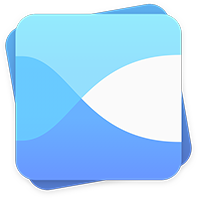flows
flows is a new design tool, conceptualized to enable a more structured design workflow, while at the same time offering the user better ways to create and iterate over variations. flows was developed in the context of a bachelor thesis form march untill july of 2017.
crafting flows
Creating a new design tool wasn’t our orignial intention but rather the result of extensive research and analysis – learn more about how flows came to be
class based design
flows applies the idea of classes, originating from code and development to a design tool, helping to create complex design systems with ease.
end to end workflow
flows allows designers to do a large part of their daily design processes in one tool, from creating information architectures, to wireframes, visuals and prototypes.
designing with assets
Assets are reusable interface groups, ranging from a single lable to a large organism of different elements. flows offers rich prefilled asset libraries the user can use to consturct his interface. Users can either choose from libraries of fully customizable OS specific UI blocks or custom unstyled elements. New assets can be created using primitive elements.
creation means iteration
Design is a iterative process that requires creating and analyzing many different variation of the elements to get to the best result possible. Therefore flows was built to give users a dedicated space to try ideas and test different looks for assets, all without obstucting their actual layout. This space, called playground, is also used as the primary stage to create new assets in flows.
make it interactive
Interactivity is obviously an important part of creating digital products. Assigning behavior to static designs, can help to test ideas and UI flows, give customers a better idea of ones vision and help to simplify the communication process for designers & developers. Therefore flows offers the possibility to easily add behavior to Assets, right inside the app they were created in.
structure means flexibility
The element graph is the classs models visual representation and can be used to create, link, edit and assign these classes. By using a collumn based interface to communicate hirarchy the graph combines the benefits of node based interfaces with the structure of list views. These features make the element graph a powerful tool for designers to create highly complex systems.

